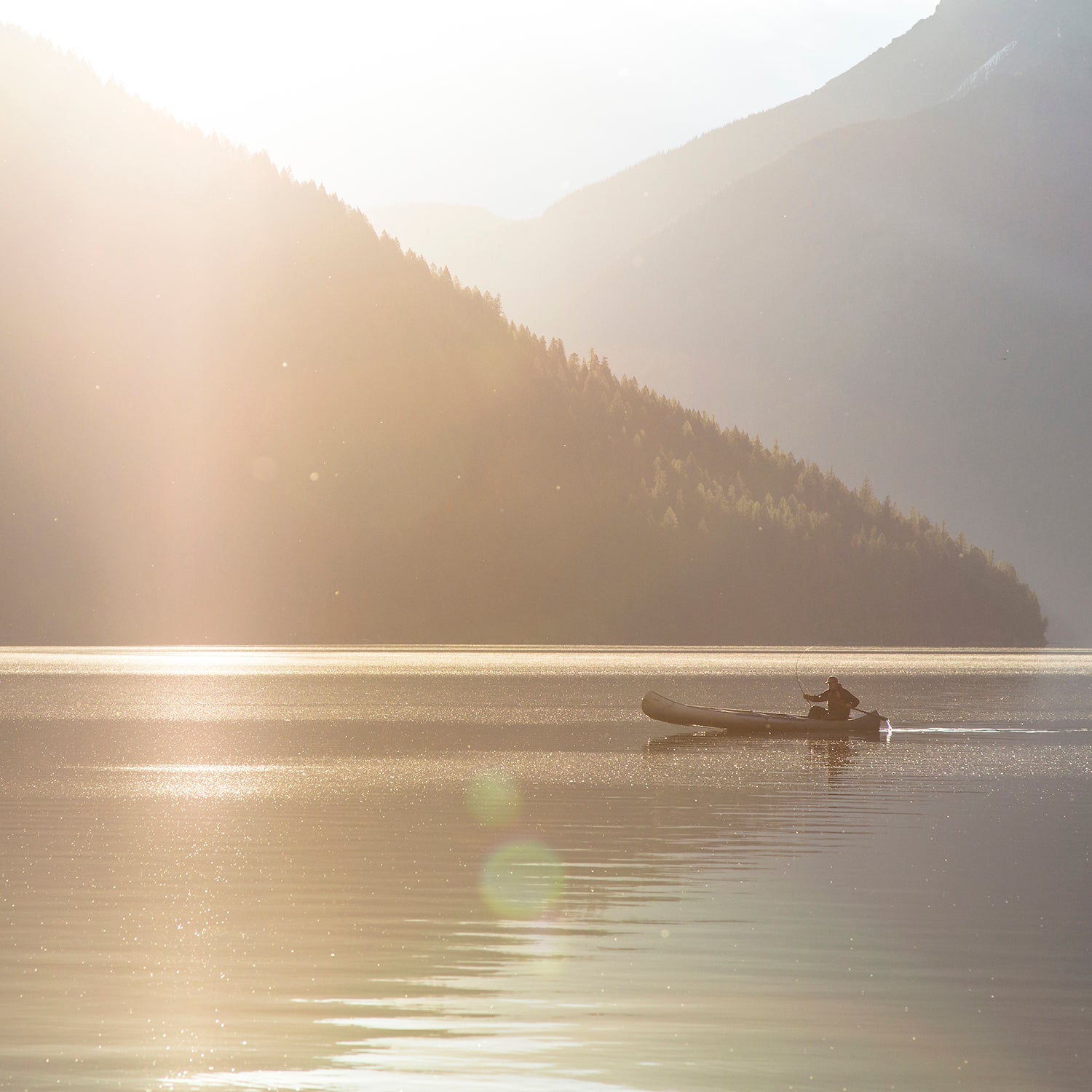AmericaÔÇÖs public lands are owned by the people and managed on our behalf by federal and state governments. That means you get to use them for all sorts of fun things╠řfor little to no charge. HereÔÇÖs how to do that.
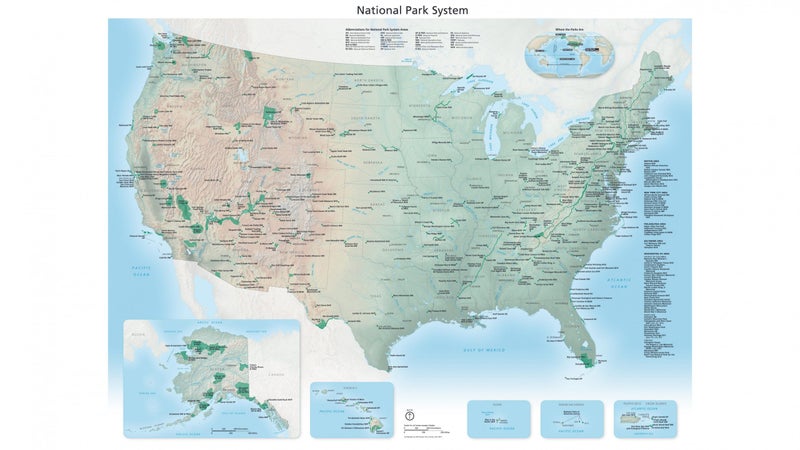
National Parks
What are they?╠řThe crown jewels of our public-lands system, protect our countryÔÇÖs╠řmost beautiful places╠řwhile making it as easy as possible for large╠řnumbers of people to visit.
Why should you go there? Sightseeing. From YosemiteÔÇÖs towering granite walls to YellowstoneÔÇÖs wildlife and thermal features, national parks contain the most iconic natural attractions.
WhatÔÇÖs better elsewhere? Camping. Not only are national parks crowded, meaning that permits and reservations are often necessary for even remote backcountry sites, but the pressure those crowds bring to these unspoiled landscapes means that youÔÇÖll necessarily be subject to lots of strictly enforced rules. Fishing may be allowed by special permit, but hunting is mostly forbidden, as are activities like mountain biking.
What do they cost? Of the 417 national-park sites, only 118 of the most popular charge entry fees, which are typically $30 for a╠řpassenger vehicle. And even that fee can be waved or reduced depending on your age, military service, or even on certain holidays.
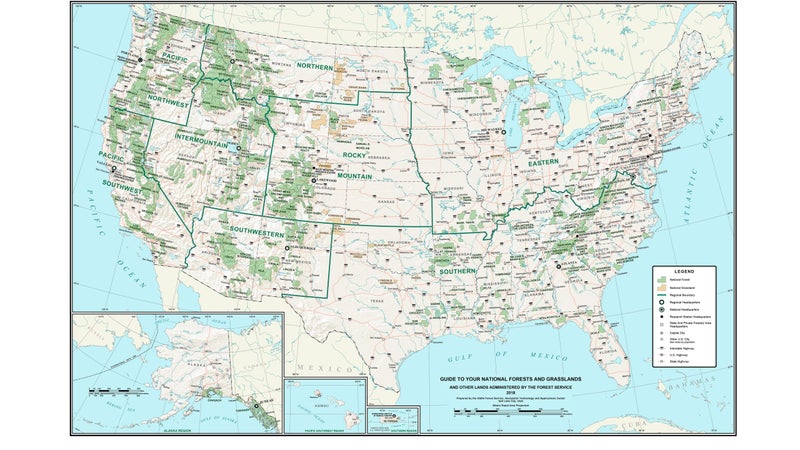
National Forests
What are they? Managed for multiple╠řuse, provide resource extraction╠řas well as wildlife conservation and recreation opportunities.
Why should you go there? For fishing, hunting, cycling, camping, and other outdoor pursuits. Forests are way less crowded than parks╠řand typically allow virtually any activity.
WhatÔÇÖs better elsewhere? Accessibility. Forests are basically╠řjust undeveloped tracts of land. Travel through them takes preparation and capability, and youÔÇÖll need to find the good stuff yourself.
What do they cost? Resource extraction pays for the rest of us to use them mostly for free, but there are specific recreation passes required at certain popular sites.
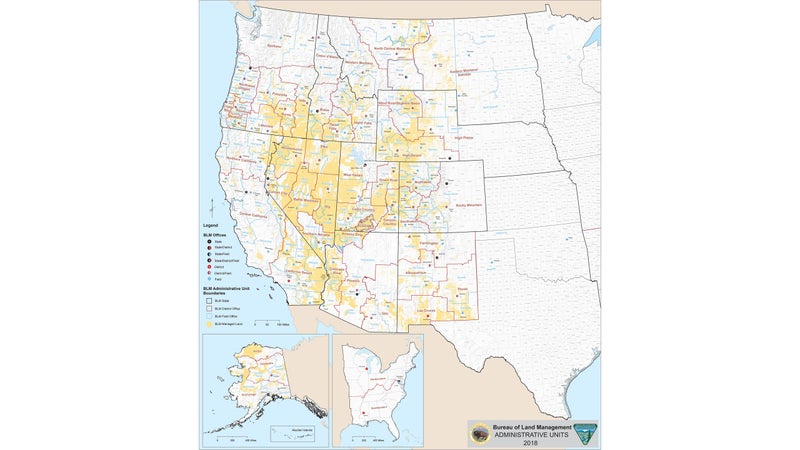
Bureau of Land Management Lands
What are they? The federal government originally tried to give away to homesteaders during the westward expansion. But╠řa lot was left over, and someone needed to manage it, so today the BLM does that for one-tenth of our landmass, on lands╠řlocated primarily in the western states. Governed by the principle of multiple use, the BLM must balance the needs of resource extraction with conservation and recreation, while maintaining this land for the enjoyment of future generations.
Why should you go there? DonÔÇÖt like rules? Well, thereÔÇÖs not many on BLM land. You can camp, you can shoot guns, you can ride or drive off-road, you can have a campfire. Within basic reason, anything goes so long as you leave only footprints╠řand donÔÇÖt drive off designated routes.
WhatÔÇÖs better elsewhere? WeÔÇÖre talking about vast empty swaths of what is typically desert, so youÔÇÖre on your own out there. Get into trouble╠řand help is likely a long way╠řaway, if available at all.
What do they cost? BLM land is typically free to use, but some permits are required for special uses╠řor in designated sites.
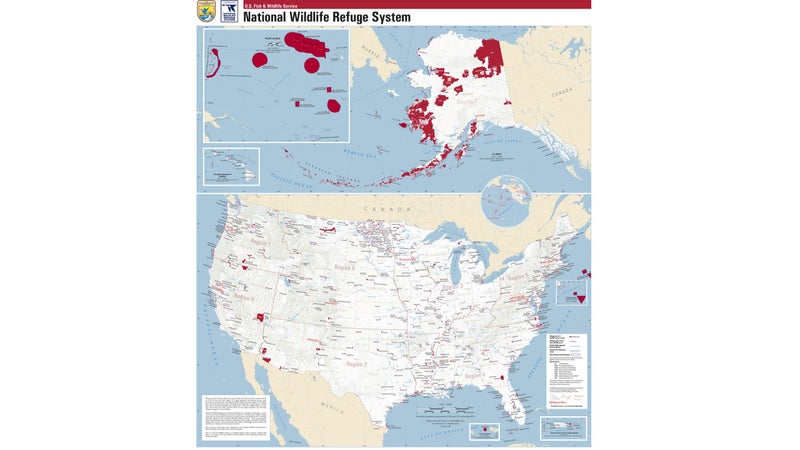
National Wildlife Refuges
What are they? Originally created╠řand still funded by╠řwaterfowl hunters, wildlife refuges exist to provide habitat and migration corridors for birds╠řand other wildlife.
Why should you go there? Hunting, fishing, paddling, and wildlife viewing.
WhatÔÇÖs better elsewhere? Camping╠řand hiking. Wildlife refuges are typically composed of wetlands╠řor contain lots of them.
What do they cost? Hunters╠řfund the wildlife-refuge system by buying a federal migratory bird-hunting permit, commonly referred to as the duck stamp. While you can visit a wildlife refuge for free if youÔÇÖre not hunting, you can also chose to contribute to the system . As a bonus, theyÔÇÖre collectible.
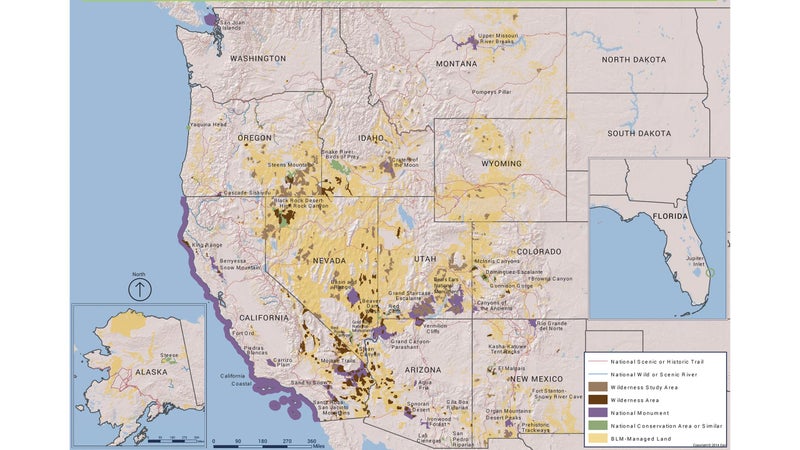
National Conservation Areas
What are they? managed by the BLM╠řbut given greater levels of protection. No resource extraction is permitted in conservation areas.
Why should you go there? Backpacking. Motorized travel is typically restricted in conservation areas, leaving you free to explore these exceptionally stunning╠ř(but uncrowded)╠řplaces on foot.
WhatÔÇÖs better elsewhere? Accessibility╠řand recreation. With access being limited, and only foot travel permitted, these can be difficult places to visit. Most activities, like mountain biking, are also banned. Each one has different rules, so╠řfamiliarize yourself with them before planning a trip.
What do they cost? Some areas may require entry by special permit only. The fees are nominalÔÇötypically $10ÔÇöand are mostly a way to limit human presence.
National Monuments
What are they? in order to protect areas of particular historic, natural, or scientific interest that are being threatened. ThereÔÇÖs been a lot of political rhetoric around monuments recently, which is a shame. Each is unique╠řand typically makes an allowance for historic uses, so really they just add protection to areas we were about to lose the ability to enjoy.
Why should you go there? By their very nature, monuments are remarkable. Some, like Mount Rushmore, are simply╠řtourist attractions. Others, like Bears Ears, offer some of the best backcountry camping in the world.
WhatÔÇÖs better elsewhere? I suppose if youÔÇÖre an energy company looking to rape the environment you might look elsewhere.
What do they cost? Depends on the monument. Most are free.
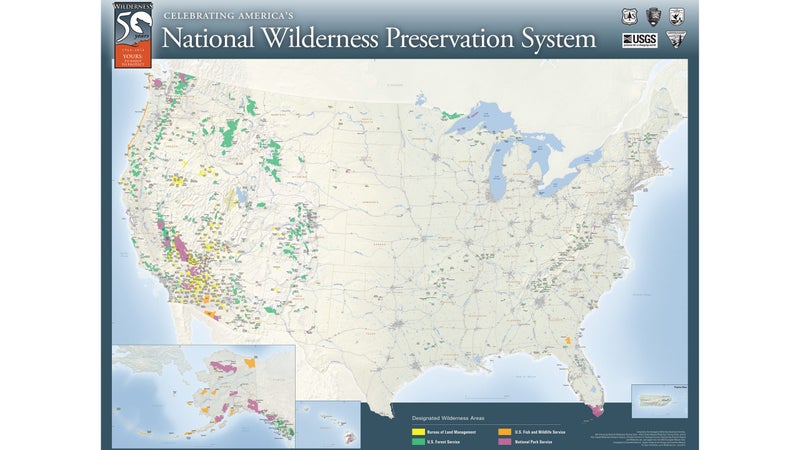
Wilderness Areas
What are they?. Wilderness areas are designated by Congress, can exist within other types of lands, like national forests, and specifically ban any form of motorized or wheeled travel.
Why should you go there? To see and participate in truly wild landscapes. TheyÔÇÖre great places to go backpacking, hunting, and fishing.
WhatÔÇÖs better elsewhere? Wildernesses are, by definition, difficult to access. ThatÔÇÖs what makes them funÔÇöbut only for the prepared.
What do they cost? TheyÔÇÖre typically free, but parking at the trailhead may come with a fee depending on location.
National Recreation Areas
What are they? Typically located near major urban areas, and are designed to provide outdoor recreation opportunities for large numbers of people. Many are╠řon a dammed river, .
Why should you go there? TheyÔÇÖre easy to get to. They have lots of water or trails.╠řGo have fun.
WhatÔÇÖs better elsewhere? Visiting during spring break probably isnÔÇÖt for shy and retiring types.
What do they cost? Typically $25 per passenger vehicle, and there may be additional slip and moorage fees.
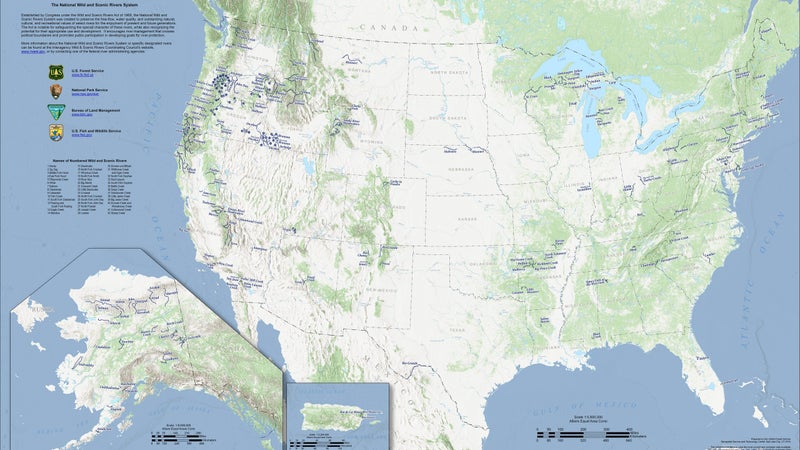
Wild and Scenic Rivers
What are they? Created as a mechanism for preserving natural (read: without dams)╠řwaterways in their original state, the is basically a wilderness designation for water.
Why should you go there? Floating and fishing. If you want to experience a river as nature intended, this is where you do that.
WhatÔÇÖs better elsewhere? Motorized boating is prohibited on many wild and scenic rivers; each has its own management plan.
What do they cost? TheyÔÇÖre free to use, but you may encounter╠řparking or put-in/take-out fees in some areas, and youÔÇÖll need a state license to fish.
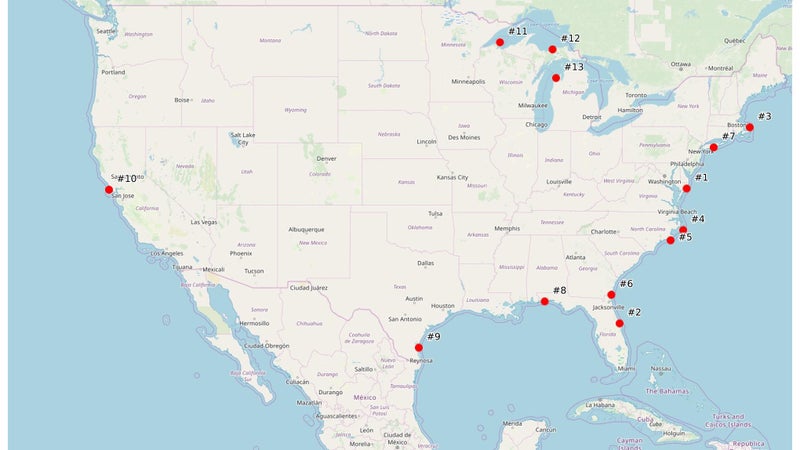
National Seashores and Lakeshores
What are they? Established to preserve , youÔÇÖll find these along the coasts of both oceans, the Gulf of Mexico,╠řand the Great Lakes.
Why should you go there? Like beaches? Want to see what those looked like before people built hotels and expensive houses on them? Well, these are the most beautiful, unspoiled beaches in the country.
WhatÔÇÖs better elsewhere? YouÔÇÖre not going to find services like beach bars and banana stands here.
What do they cost? Fees vary from $3 to $20 per day.
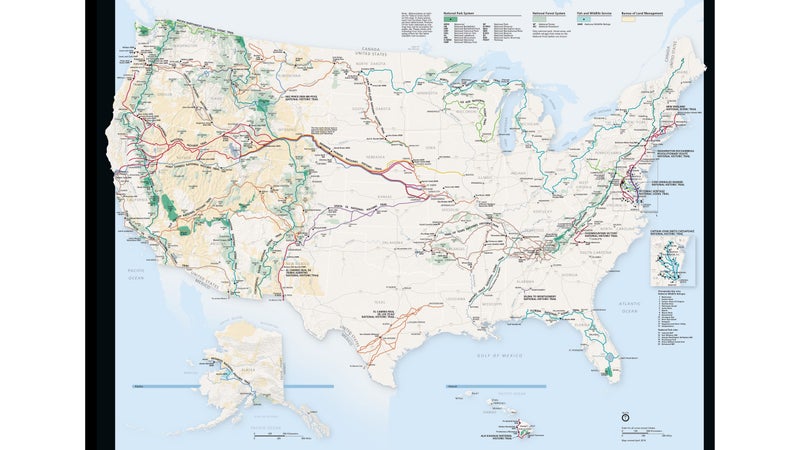
National Trails
What are they? . Access and management are provided by the federal government along routes that may cross state, federal, and private land. There are╠řthree types of national trails: scenic, historic, and recreation. Scenic trails, likely the type╠řyouÔÇÖre most familiar with,╠řare at least 100 miles in length╠řand compose our nationÔÇÖs most famous thru-hiking routes, like the Appalachian Trail. Historic trails retrace famous trips, like the 4,900-mile Lewis and Clark Trail,╠řthe path of the well-known mapping expedition. Recreation╠řtrails are just that╠řand vary in length.
Why should you go there? Backpacking trips. If youÔÇÖve got something to prove, and that something is the ability to march along a trail for several weeks or months, then this is where youÔÇÖd do that.
WhatÔÇÖs better elsewhere? IÔÇÖd say solitude, as the most famous trails are pretty darn popular these days, but there are╠řso many trails in this system, and some are so remote, that you can definitely find that here,╠řtoo.
What do they cost?╠řNational trails are typically free, but you may need to pay fees if you pass through certain national parks, use some campgrounds, or take advantage of other services.
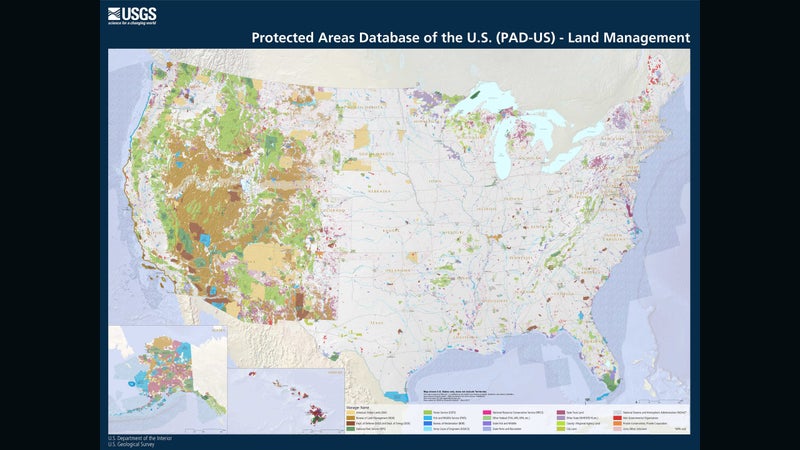
DonÔÇÖt Forget the╠řRest
Even with all the 640 million acres mentioned above, weÔÇÖre only scratching the surface of places you can go play outdoors in the United States. Those states also own land, and while they arenÔÇÖt required to protect it to the same degree as the feds, state-trust lands╠řand state parks still offer amazing recreational opportunities. So╠řin addition to the enormous amount of land managed by the federal government, Americans have access to , , and numerous smaller city parks. No matter where you are in the country, thereÔÇÖs probably some of that public land right outside your front door. .


